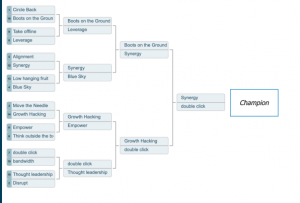 Are you disappointed with your Google AdWords ad positions? Does it feel like you’re paying more than you should, yet you’re always being outranked by competitors? Then chances are, you’re not following Google AdWords best practices.
Are you disappointed with your Google AdWords ad positions? Does it feel like you’re paying more than you should, yet you’re always being outranked by competitors? Then chances are, you’re not following Google AdWords best practices.
At its core, AdWords best practices are in place to determine which advertisers are creating the better user experience for their customers. Google rewards advertisers who follow the best practices, which means they’ll attain higher ranking positions at a lower cost. Following best practices without changing bids can lead to better performance on its own. The opposite is also true, if you’re not following the best practices you’ll end up paying more and you’ll be lucky to achieve a favorable ad position.
The difference between following AdWords best practices and not following them is profound. If you think the difference is negligible, consider the fact that if you don’t follow best practices you may not even show up on the first page at all. You might actually end up in the ad units on the second or third page of Google search results. To add insult to injury, you may even be paying more for those positions than the advertisers who show up in the first position on the first page.
Following AdWords best practices doesn’t mean you’ll have to jump through hoops to please Google with your ad campaigns. The concept is very straightforward — you take a keyword and make it relevant to the content in the ad. The headline and copy included in the ad should be highly relevant to the keyword. In addition, the content that the ad links to should also be highly relevant to the keyword. This creates a better experience because the customer is getting exactly what they searched for.
When you follow best practices you’re also improving your Quality Score — ads with relevant copy to the keyword being searched for are likely to get more clicks. The more clicks your ads receive, the more your Quality Score will rise, and the better the ad positions you will achieve. Not sure what Quality Score is all about? Read our detailed article which explains all the factors that go into determining Quality Score.
Google AdWords Best Practices: Where People Get it Wrong
Those who manage their own AdWords campaign, rather than having it managed by trained professionals, typically make a lot of the same mistakes. For example, they may assign one single generic ad to an entire keyword group, or they may be linking all their ads to the homepage instead of linking to the page that’s most relevant to the keyword.
Those are critical mistakes, but a lot of DIY’ers are oblivious to the fact that they’re not following Google AdWords best practices. Moreover, if they’re completely new to AdWords, they might not even know that there are best practices to follow. Google doesn’t exactly hold your hand telling you what to do and what not to do when creating an AdWords campaign, you have to rely on your own knowledge of the platform.
Frustrated advertisers often believe if they just throw more money at Google they’ll be able to outrank competitors. Paying more money can only get you so far. First of all, it is very challenging to outrank a competitor for their own brand name. Second, blowing your advertising budget on AdWords is an inefficient way to rank higher, and it will be far more difficult to turn those precious advertising dollars into positive ROI.
Business & Finance Articles on Business 2 Community(31)







